When the United States first won independence from Britain in 1783, the young nation soon learned that freedom had some disadvantages. One big one being that America had lost its protector, at sea.
British and French vessels alike harassed American merchant shipping, often kidnapping American sailors and forcing them to serve in their own navies.

Barbary pirates were a problem for Mediterranean and Atlantic shipping alike, harassing American shipping as early as 1785.
In 1793 alone these brigands captured 11 American vessels holding the ships and crew, for ransom.
Congress passed the Naval Act of 1794, appropriating funds to build a fleet of 6 three-masted, heavy frigates for the United States Navy. The act included a clause halting construction, in the event of a peace treaty with Algiers. No such treaty was ever concluded.
Named by George Washington himself and launched October 21, 1797, USS Constitution was one of these six. With hull made from the wood of 2,000 Georgia live oak trees, she was built in the Edmund Hartt shipyard of Boston, Massachusetts.
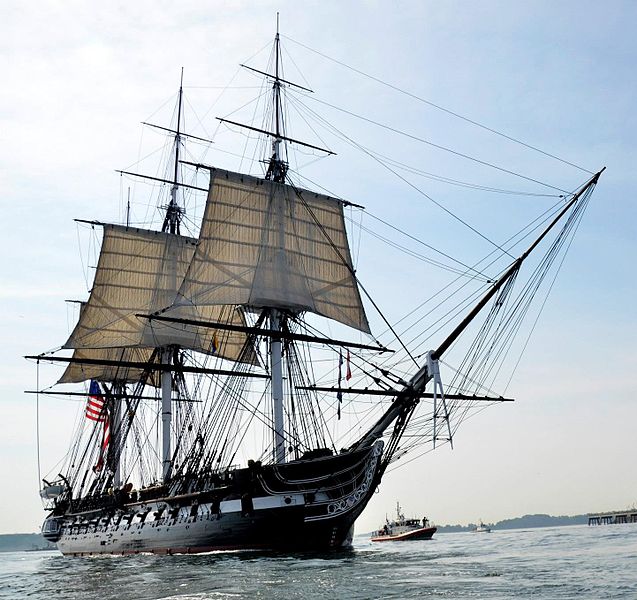
Constitution’s first duties involved the “quasi-war” with France, but this was not the France who helped the US win the war for independence. The French monarchy was swallowed up by this time in a revolution of its own, radical leftists calling themselves “Jacobins” sending the Bourbon King and his Queen Consort Marie Antoinette, to the guillotine. Marie-Joseph Paul Yves Roch Gilbert du Motier, Marquis de Lafayette and Hero of the American Revolution, languished in an Austrian prison.
The French Monarchy would be restored one day, but not before a certain Corsican Corporal rose to the rank of Emperor to meet his Waterloo, fighting (and winning) more battles than Julius Caesar, Frederick the Great, Alexander the Great, and Hannibal, combined. But I digress.
The Barbary pirates were paid “tribute” during this time to keep quiet, but that ended in 1800. Yusuf Karamanli, Pasha of Tripoli, demanded $225,000 from the incoming Jefferson administration. Jefferson refused and Constitution joined in the Barbary Wars in 1803, a conflict memorialized in a line from the Marine Corps Hymn “From the Halls of Montezuma to the Shores of Tripoli.”

In July 1812, Constitution put to sea off the coast of New Jersey intending to join the five ship squadron of Commodore John Rodgers. Spotting sail over the night of July 17 and thinking that they had found their rendezvous, Constitution was soon disabused of that notion. Lookouts reported 4 British warships heading west and a 5th, the 38-gun frigate, HMS Guerriere, heading straight for her.
The 64-gun ship of the line HMS Africa soon joined the chase along with the frigates Shannon, Aeolus and Belvidera. That soon to be famous “iron” hull would be useless in a 5 to 1 fight.
With light winds that sometimes died down altogether Constitution dropped her boats, to tow the ship. Captain Philip Broke followed suit ordering the boats of his entire fleet to join in, towing HMS Shannon. Captain Isaac Hull ordered nine tons of drinking water pumped overboard but still, her pursuers closed the distance. First Lieutenant Charles Morris suggested “kedging“, where Constitution’s boats were rowed out to drop small “kedge anchors”. Sailors would then haul the frigate up the anchor chain. British ships imitated the tactic but the fire of Constitution’s aft guns kept the adversary at bay. Before it was over this slow motion race for survival lasted 57 hours, in the July heat.

Constitution sailed for Boston to replenish drinking water supplies after this episode and returned to sea on August 2, to raid British shipping off the coast of Halifax. Meanwhile Broke detached Guerriere to return to Halifax, for a much needed refit.
On the afternoon of August 19, 1812 Constitution spotted a large frigate to leeward, some 400 miles off the coast of Halifax. She was that same 38 gun frigate HMS Guerriere, from the earlier pursuit. This time there would be no flight. There was about to be a fight.
Aboard Guerriere Captain James Richard Dacres was holding the American merchant Captain William Orne, captive. Dacres asked the American who this might be and Orne replied she was without doubt, American. The British captain remarked he’d be “made for life” to be the first to capture an American frigate.
Both vessels shortened to ‘fighting sail’, preparing for action. Watching a ball bounce harmlessly off Constitution’s 21” thick oak hull, one American sailor exclaimed “Huzzah! her sides are made of iron!” The two ships closed to “half a pistol shot” range and pounded each other with broadsides the Constitution to starboard and Guerriere, to port.
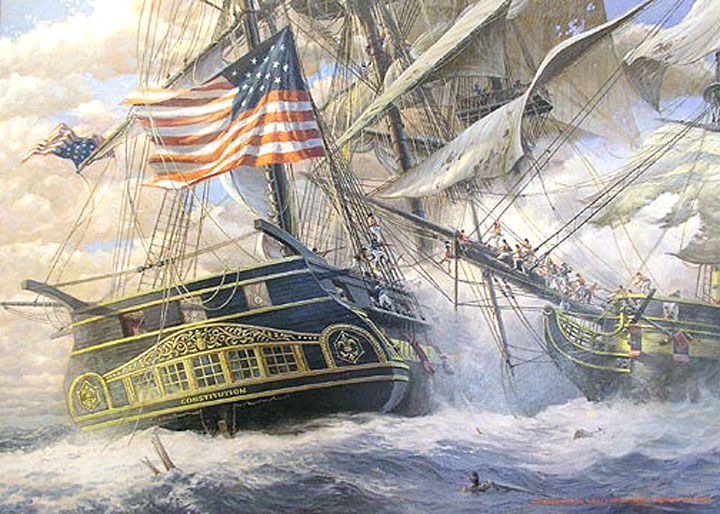
The larger guns and thicker hull of USS Constitution took their toll and Guerrier’s mizzenmast fell, as Constitution turned to deliver another broadside. Guerrier’s bowsprit became snarled in Constitution’s rigging and now the two ships were locked together, slowly rotating clockwise and exchanging fire, at point-blank range. Boarding parties were made ready but heavy seas prevented anything but musket shot. Soon the aft cabin was ablaze on the American ship but the English, were taking a pounding.
Like prize fighters locked in a clinch the two ships finally parted as Guerriere’s foremast and mainmast, snapped off at the deck. Her “power plant” thus crippled Dacres ordered sail set on the bowsprit as Constitution ran downwind, repairing rigging before once again, turning to the battle.
In twenty minutes Guerriere was reduced to an unsalvageable hulk. Ten American sailors were discovered afterward, “pressed” into service aboard the British frigate. Captain Dacres had allowed them to remain below decks, rather than fight their countrymen. Dacres was escorted aboard Constitution where Hull refused his sword, saying that he could not take the sword of a man who had fought so gallantly.
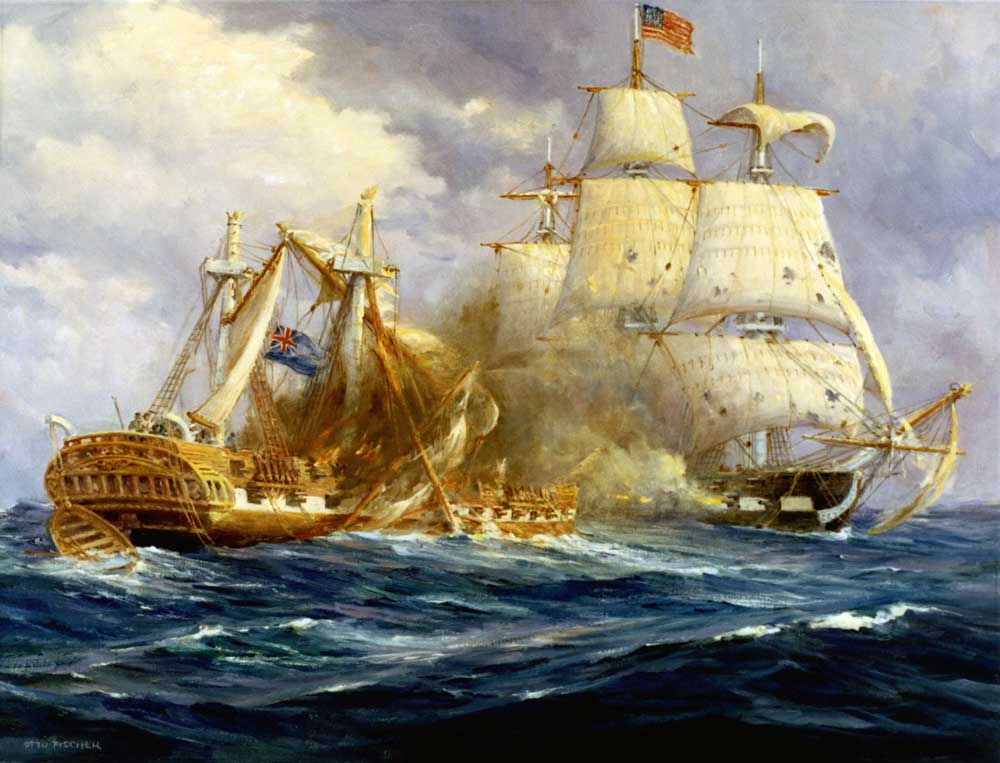
Captain Hull wanted to tow the hulk into port as a prize, but she was beyond salvage. Guerriere was burned to the waterline. With shot embedded in her lower masts Constitution returned to port, unable to continue her cruise. Captain Dacres returned to England to stand court-martial, for the loss of his ship.
Isaac Hull could have joined the likes of John Paul Jones, David Farragut and Chester Nimitz as naval heroes of the young nation, but he would never again hold a fighting command. His brother had died and Hull was duty bound to support his widowed sister-in-law, and her children. Permission was asked and granted, that he switch commands with Captain William Bainbridge. Bainbridge would go on to a long an illustrious career at sea and service, under six presidents. Hull served out his career as commander of the Boston Navy Yard.
USS Constitution is still in service today, the world’s oldest commissioned naval vessel, still afloat. She went into dry dock for major overhaul in October 2014 and re-floated in July, 2017. Freshly restored and re-fitted, Old Ironsides can be boarded at your convenience at Charlestown harbor. But this time, you needn’t bring a musket.
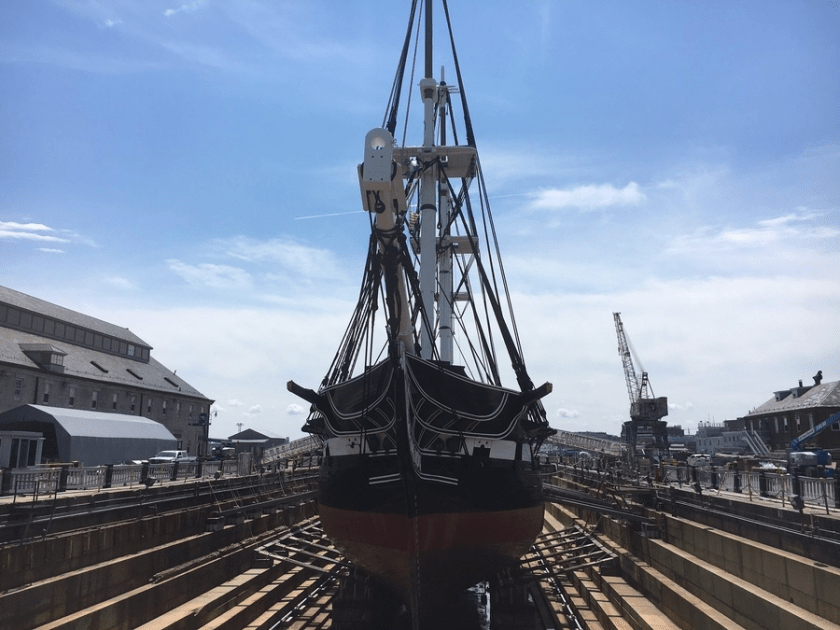

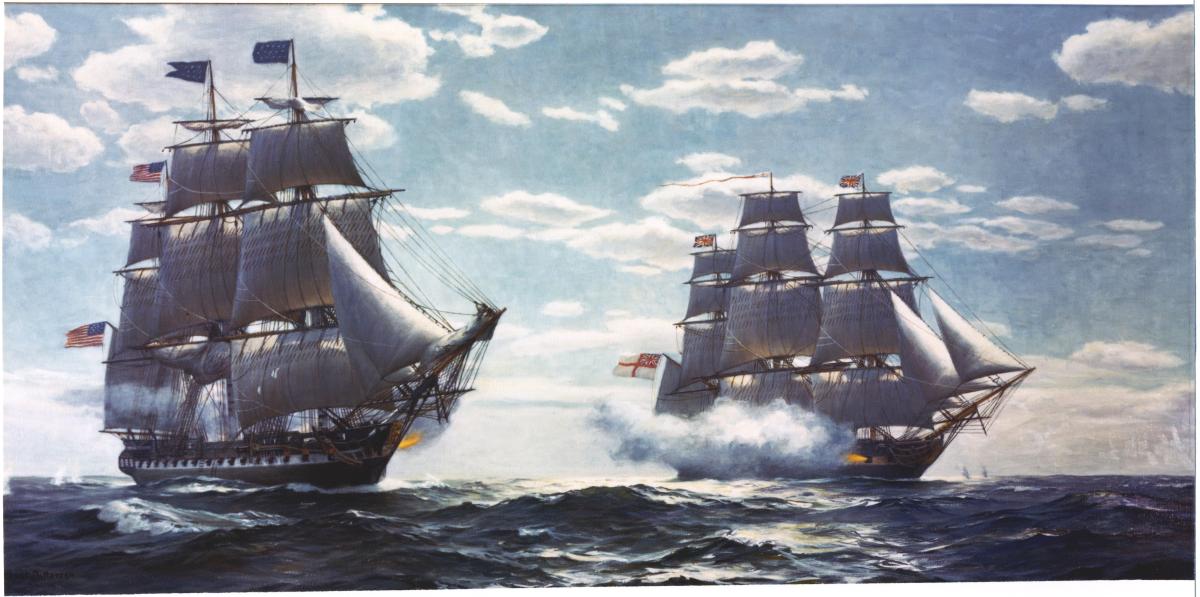

You must be logged in to post a comment.